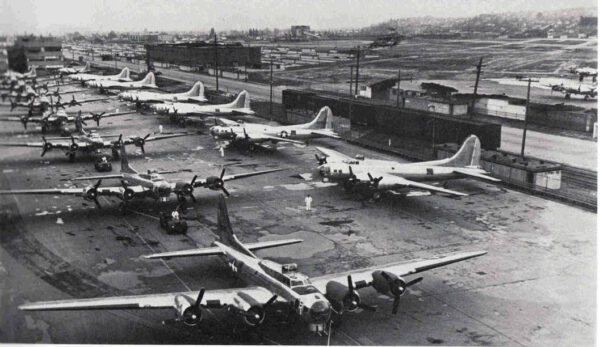A bit of Boeing history
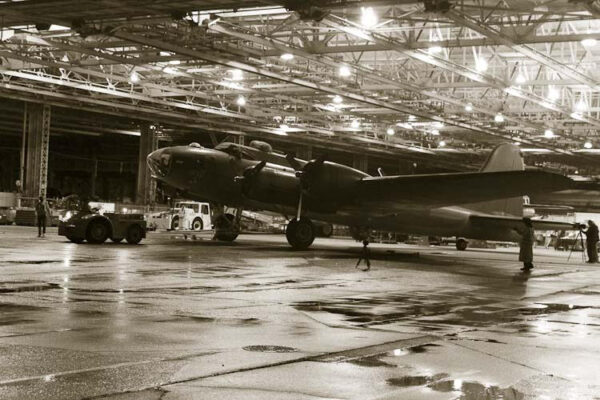
1944? No – it’s the year 2010
Early Saturday morning in a rainy Seattle . 0300 hrs local time. The location: Boeing’s historic Plant II – about to be torn down after three quarters of a century producing thousands of the most significant and historic airplanes ever built.
In preparation for demolition, three airplanes that have been undergoing Museum of Flight restoration in the factory’s assembly bays will have to be moved. Just as in days past, with lights and images reflecting off the wet pavement, the last three airplanes are rolled out. The giant hangar doors are raised, the tugs and towbars are hooked up, and with lights flashing, they are moved out of the factory and onto the historic ramp. Where so many have gone before. Then across East Marginal Way and out onto Boeing Field.
They are the last airplanes to roll out of these doors. Ever.
First out isn’t even a Boeing airplane – but rather a Lockheed Super G Constellation that flew for Trans-Canada Air Lines. The Connie is destined for the Air Park , next to Air Force One, after a Plant II stay of 1 year and three days.
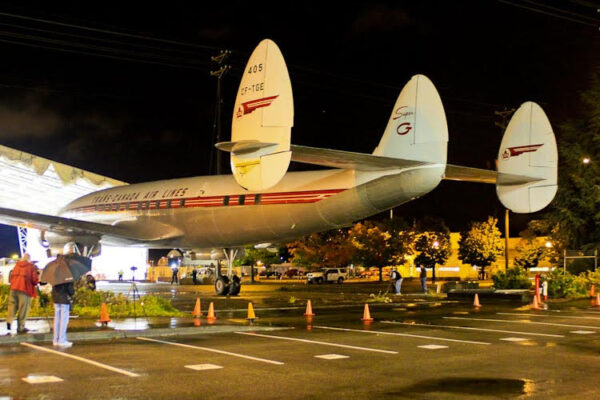
Next is a Boeing B-17 – especially heart-tugging as she is the last B-17 to roll out of these doors. Boeing built 6981 B-17s in this factory during WW II, at a peak rate of 16 per day. I guess you could say they built 6981 and rolled out 6982 – including this last ship – 65 years after her last sister.
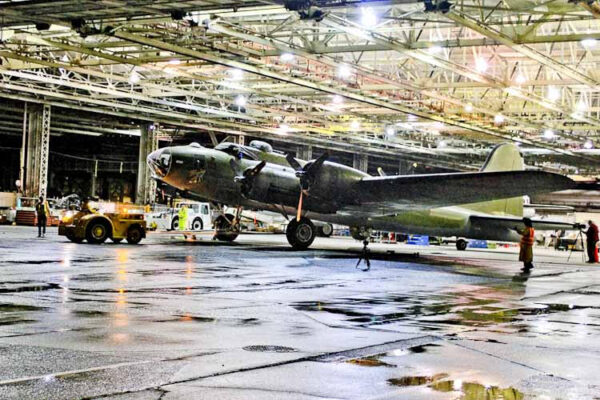
A poignant moment in time
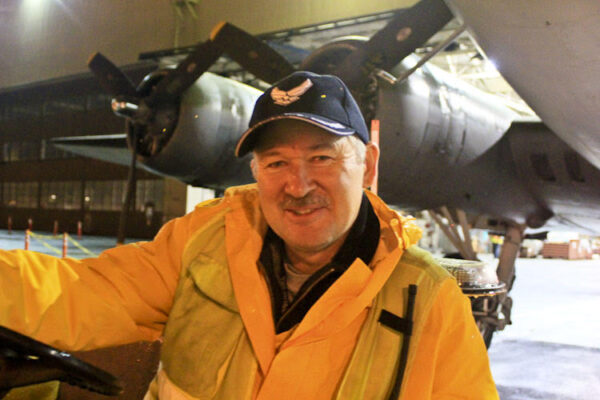
Museum employee and good friend Evan Elliott, driving the tug, knows he has just made history.
Finally, a Boeing B-29 rolls under the raised hangar doors and out into the dark and wet night. The very last airplane that will ever roll from this factory.
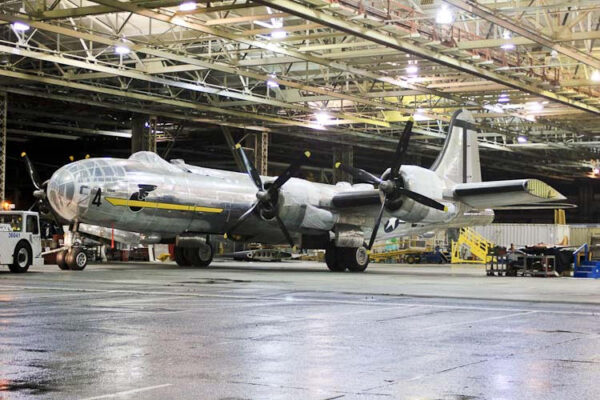
This Boeing B-29 is the “last of the last.”
The now empty factory bays sit – silently awaiting their fate.
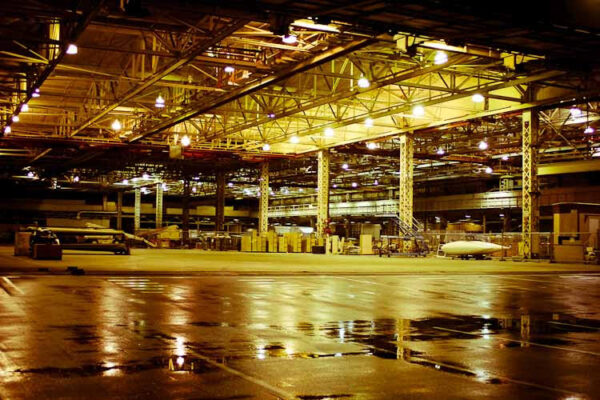
Everyone present knew they were witnessing history unfolding in front of their eyes. More than a few tears ran down more than a few cheeks, to mingle with the soft Seattle drops of rain.
A Boeing Plant II Primer
The ramp that these three historic airplanes roll across, and the building they leave is one of the most historic aviation sites in the world.
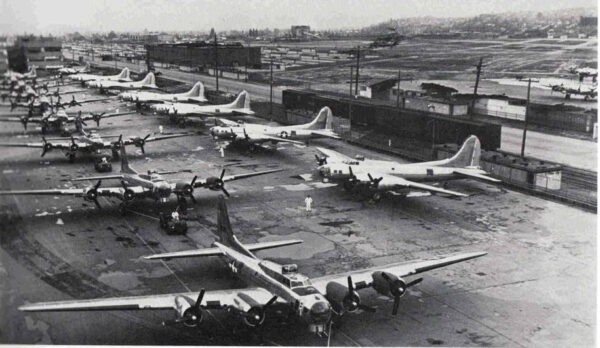
Here, in April 1944, are the 16 B-17 Flying Fortress bombers produced in this building – that day, and every day! Click here for a Personal Note about those B-17s. (See bottom of this email).
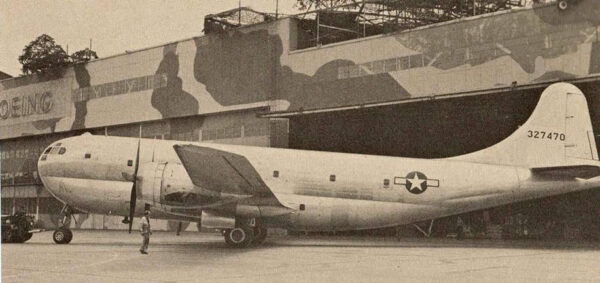
In October 1944, the first Boeing XC-97 rolled out of these doors – later to become the C-97 transport, KC-97 Tanker, and B-377 commercial Stratocruiser. (See the camouflage on the roof?)
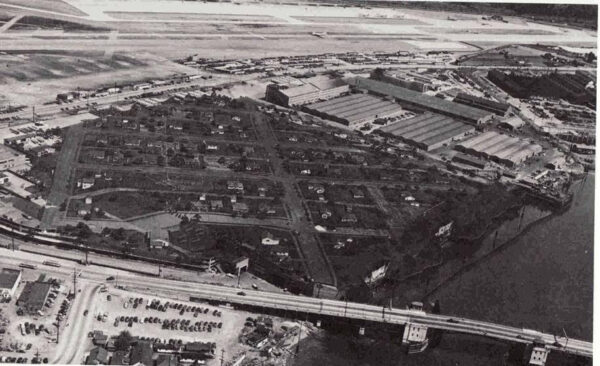
During WW II, the plant was completely camouflaged to look like a residential area as protection against possible Japanese air attack.
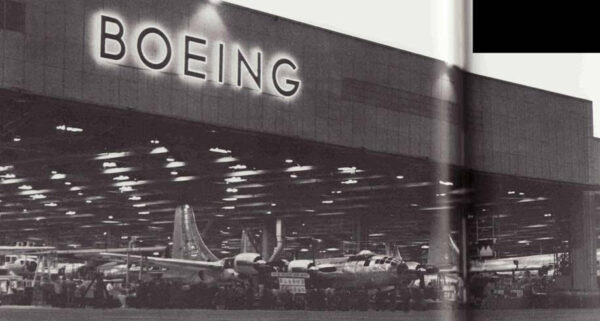
In the late 1940s and early 1950s, myriad B-50 bombers and C-97 Transports are being produced in this factory.
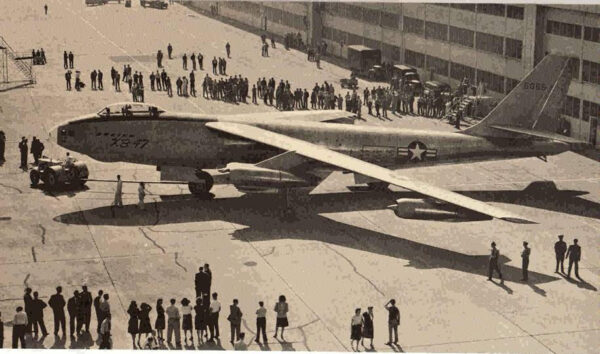
On 12 Sept 1947, a radical new airplane – the Boeing B-47 six-jet bomber Prototype is rolled out. This airplane is the direct lineal matriarch for all the jet airplanes Boeing has produced since.
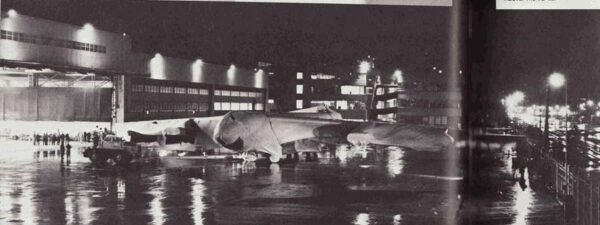
In 1952, in the darkness and wet of a Seattle night, the Prototype Boeing B-52 8-engine Bomber is rolled out and across East Marginal Way . She’s shrouded in secrecy and covered by canvas and tarps. This amazing airplane is still in front-line combat service to this day.
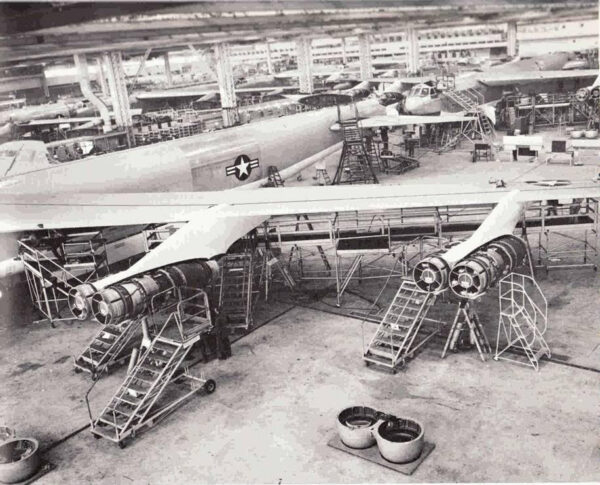
Here 277 B-52s are being produced where the earlier airplanes once were assembled.
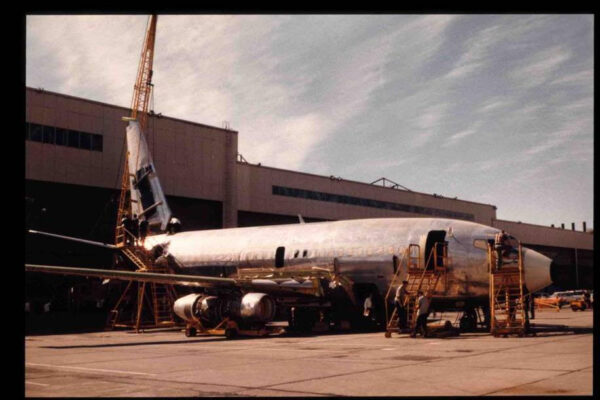
And, in 1966, the first Prototype Boeing twin-jet 737 was manufactured in this building and rolled out of these doors on to this ramp. This airplane (which I worked on – then, and which I still work on – now,) is in the Museum’s collection. She’s the first of more than 8000 737s built or ordered since then.
She, and 44 years later, the Super Connie, are my bit of Plant II experience.
And so, today – History meets History as the last three airplanes roll out of these doors.
Boeing’s Plant II is truly aviation Hallowed Ground.
Note: The B-17 and B-29 went to hangars across the field; the Connie to the Air Park.
A Personal Note
During WW II, Boeing manufactured 13 B-17 Flying Fortress bombers every day in that factory (16 per day at the max.) During the month of March 1944, they delivered 365 of those new bombers to the U.S. Army Air Force — in that one month! That’s a lot of airplanes, and a lot of history….
My very first boss at Boeing was a wonderful man named Roy Lundberg. We remained life long friends. Although gone for many years, I miss him and think of him often. A resourceful, wiry old Swede, from the backwoods of Ione, Washington, he got me started off on the right track, and taught me many important lessons about the virtues of hard work and a job well done. In many ways, I am who I am because of Roy Lundberg.
During the war, Roy used to fly as a mechanic on the first test flights of B-17s produced in that factory. He used to check the airplane systems and fire all the guns. All the airplanes got a test flight – and, — essentially all, — got just that one test flight – before they delivered to the USAAF and flew off immediately to war. Since they were cranking out 13 airplanes a day, Roy (and his fellow crews) had to make 13 First Flight test hops each day. Sometimes the weather wouldn’t cooperate (rain and fog in Seattle, you know!), so the next day after a bad weather day, they’d have to fly 26 airplanes! Sometimes, the weather would be crummy for a few days at a time – so they’d fly 39 airplanes, and so on. All in one day! They had to, as there was no room on the Field for the flood of airplanes coming out of the factory. Needless to say, some of those test flights weren’t very “long.” You might even call them “Short!” Roy said, they’d land, climb out of one airplane and jump into the next.
By war’s end, Roy had gone on the First Flights of almost 900 B-17s……. God Bless You, Roy.
